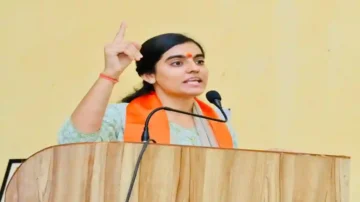Delays in Indigenous Modernization Programs
India’s solution partly lies in indigenous development: the Tejas Light Combat Aircraft (LCA) variants and future advanced fighters. Yet these programs have faced repeated delays and production shortfalls.
Tejas Mk1A: A Rs. 48,000 crore deal (2021) ordered 83 improved Tejas Mk1A fighters. HAL was to deliver the first by March 2024, but missed the deadline. Engine shortages and certifications have slowed output: the first GE F404-Mk20 engine only arrived in March 2025 (nearly 2 years late). By mid 2025, only 36 Tejas Mk1 (baseline) have been delivered to IAF; no Mk1A had yet entered service. HAL now promises 16 Tejas Mk1A per year and aims to complete all 83 by 2028. Meanwhile, the IAF plans a follow-on order for 97 more Mk1As (boosting total Tejas to 180). Despite these efforts, the slowdown has already exacerbated the squadron shortfall: retiring MiGs and Jaguars have outpaced new Tejas inductions.
Tejas Mk2 (Medium Weight Fighter): The Mk2 is a more powerful 4.5 generation variant (F414 engine, canards, longer range). The prototype is under construction, with rollout targeted by late 2025. Initial flight is expected by early 2026. However, full production only begins around 2029. Plans call for 120 Mk2 aircraft by 2034 (about 6 squadrons), but this is optimistic. HAL’s production lines are still being reconfigured, and any delays would further defer frontline impact.
AMCA (Advanced Medium Combat Aircraft): India’s first 5th generation fighter design. The MoD approved an execution model for AMCA in May 2025. The DRDO has committed to delivering the first prototype by 2032 and full deployment by 2035. This “new dawn” project promises stealth, supercruise, internal bays, etc. But note, even with the 2024 Cabinet approval, the prototype won’t fly for 10 years. AMCA thus won’t contribute to force strength until the mid 2030s at the earliest. An international JV for its engine is in discussion (to avoid repeating the Kaveri failure).
Each of these programs is crucial, but their timelines are protracted. For example, the original Tejas Mk1 was sanctioned in 1983 and only entered service in 2019 – over 35 years in the making. Such delays force the IAF to hang on to outdated jets longer. The message is clear: faster induction of Tejas variants and AMCA is critical to narrow the capability gap.













